
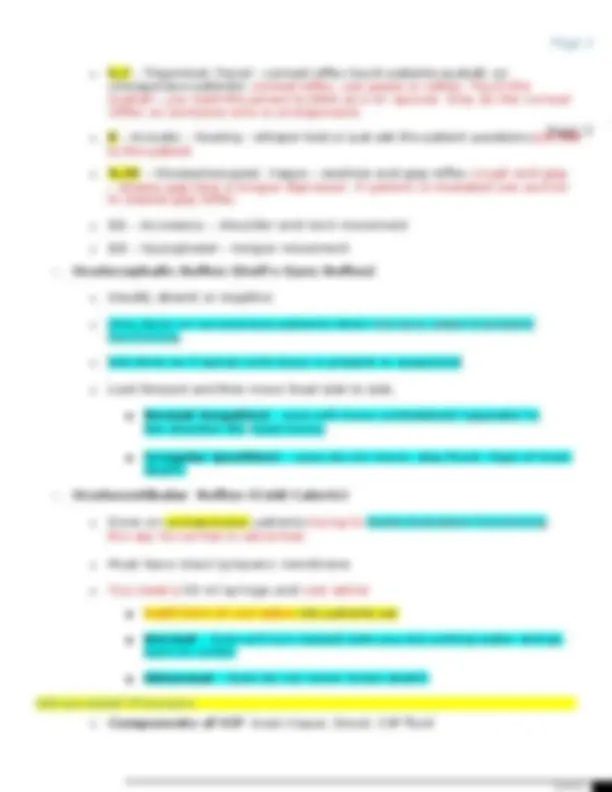
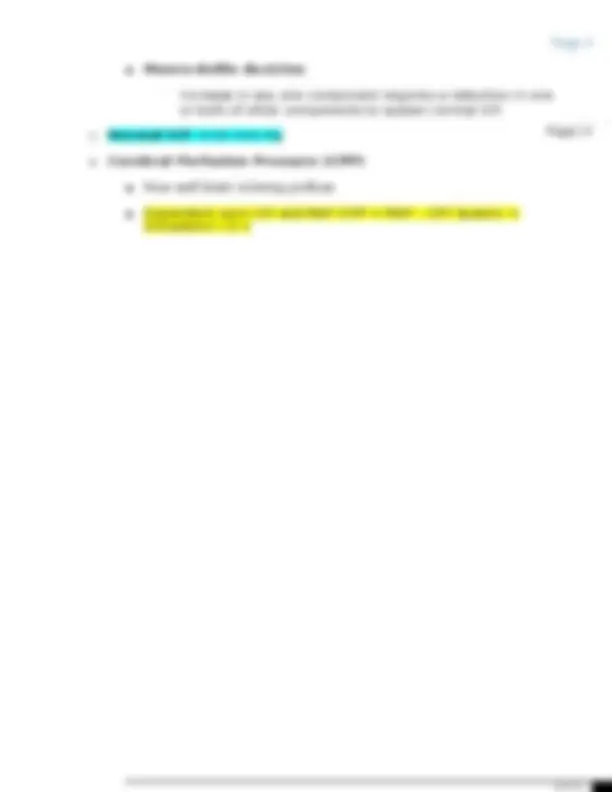
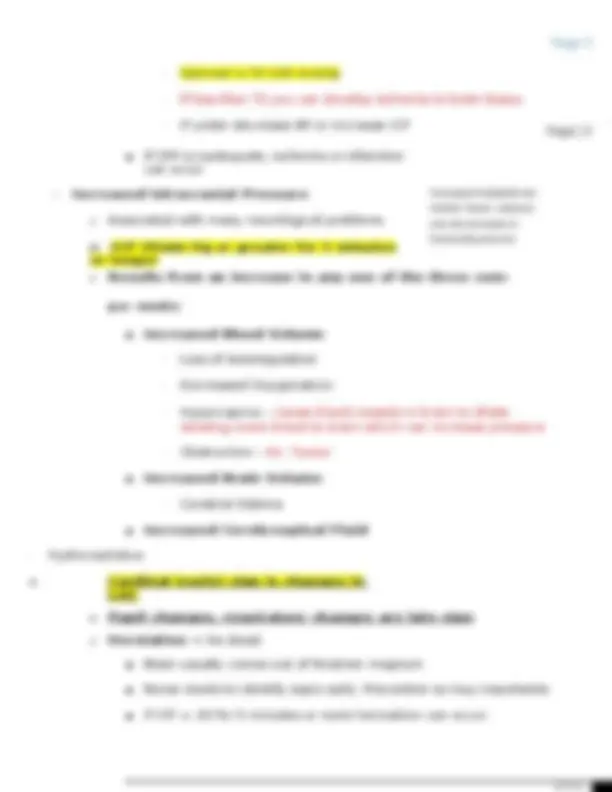

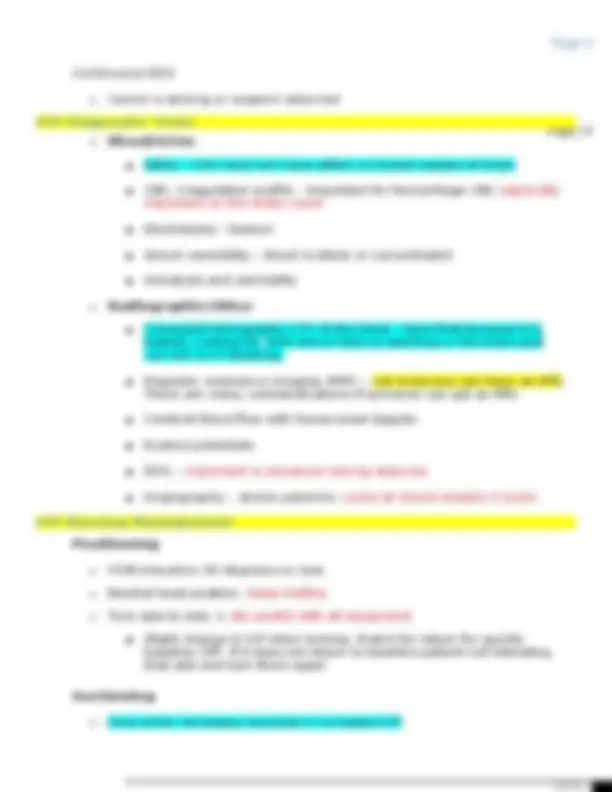

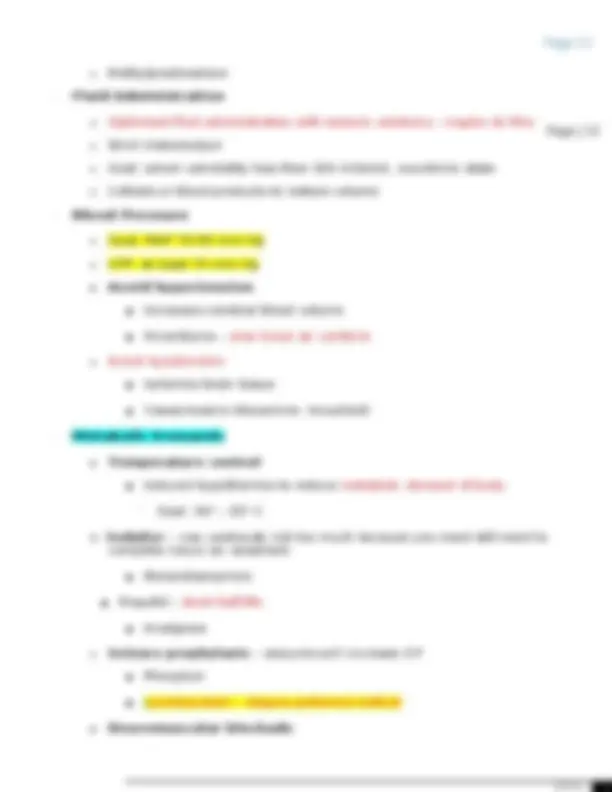

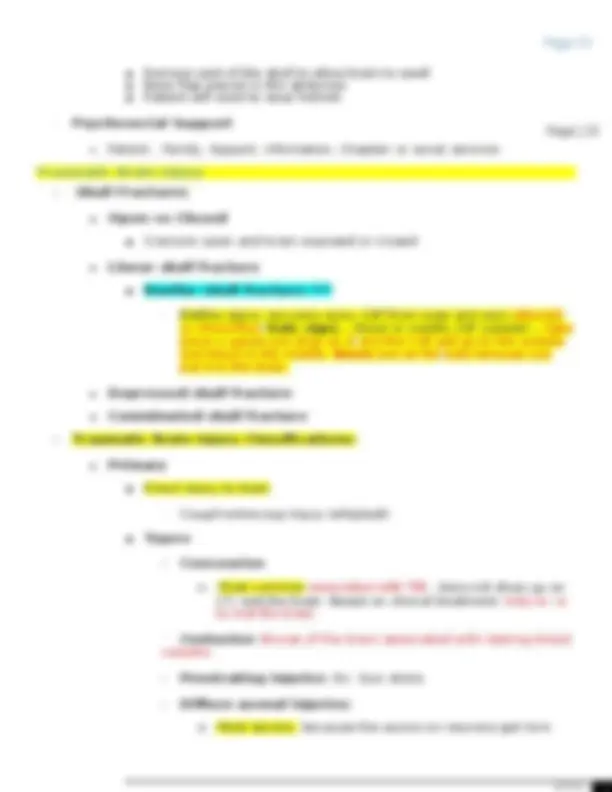
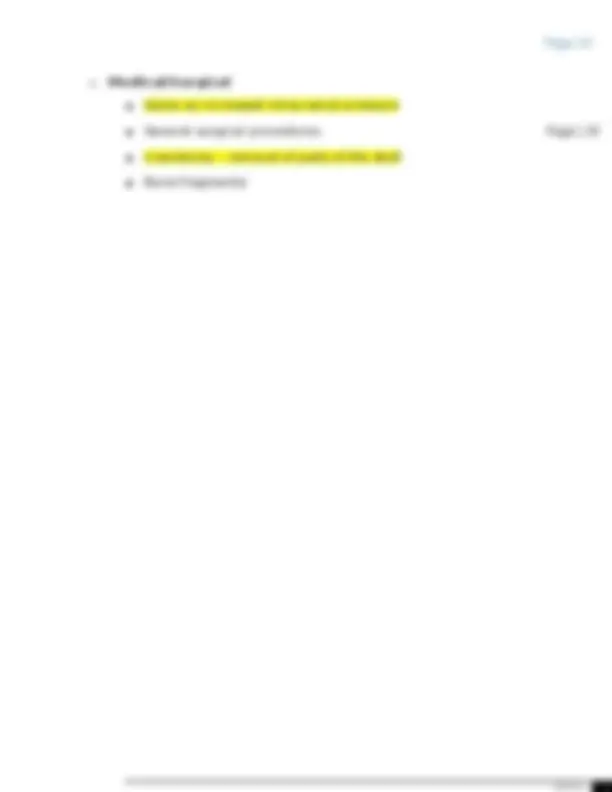
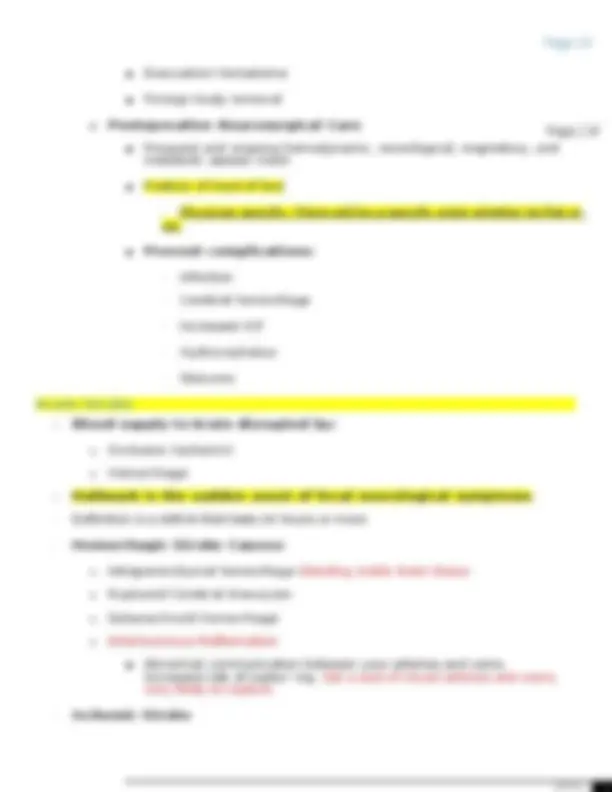

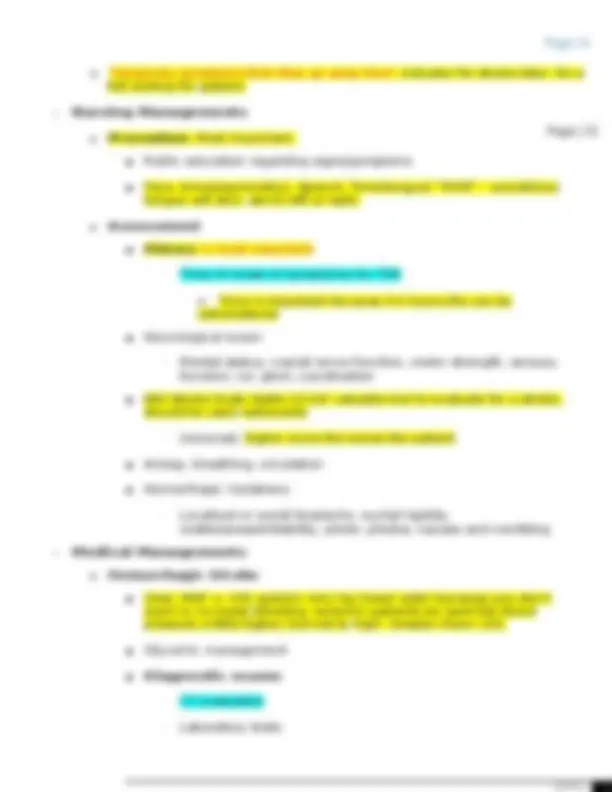



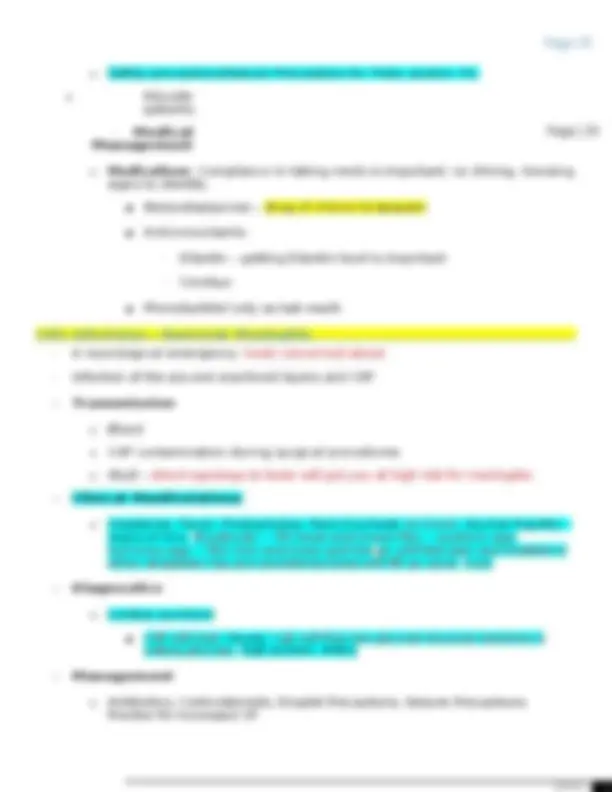

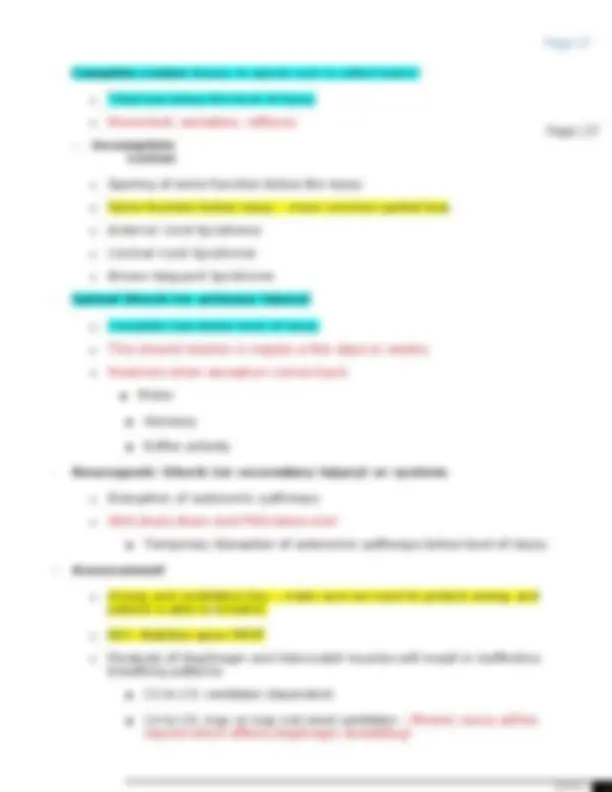

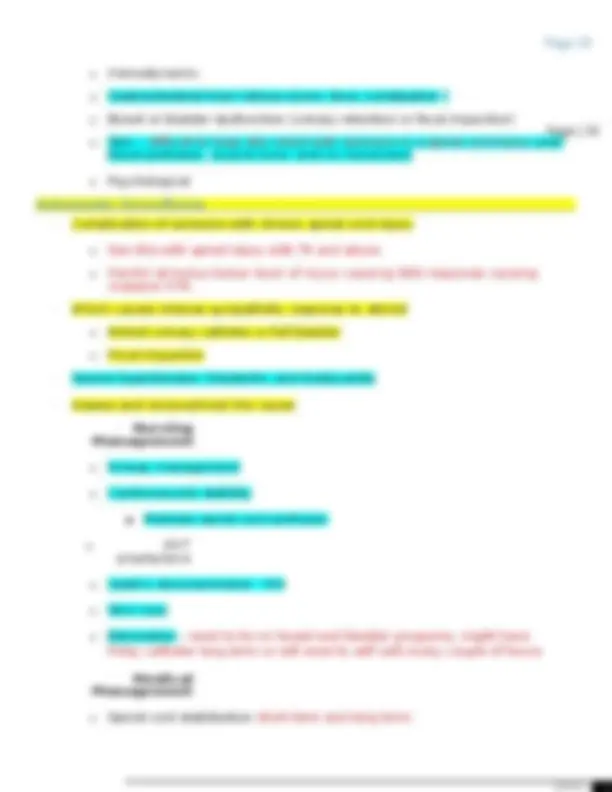

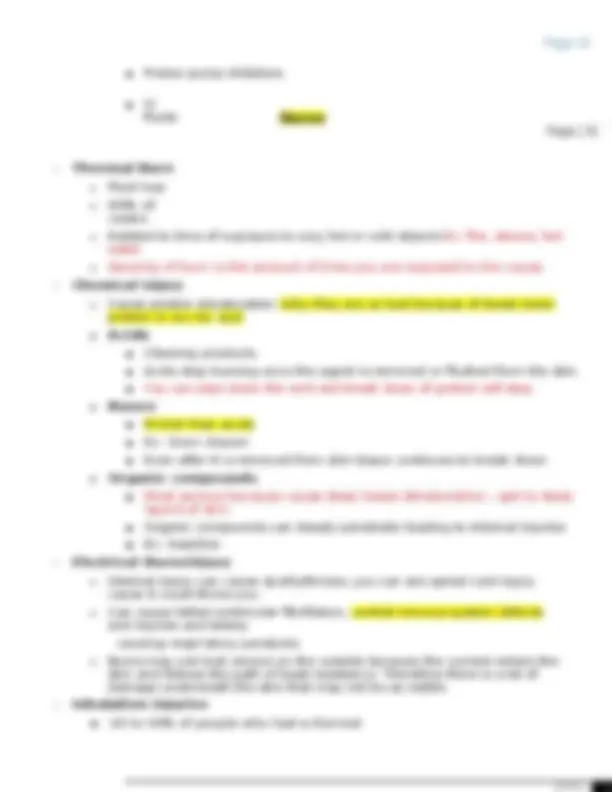
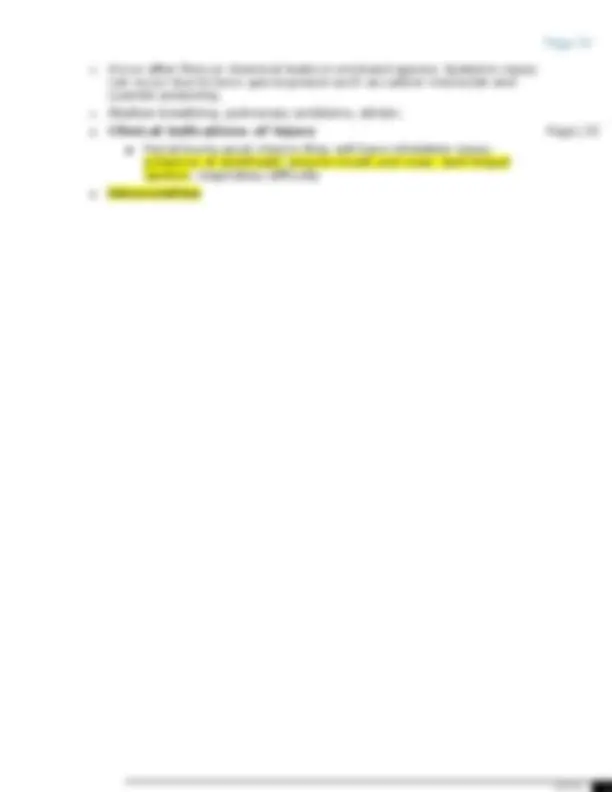
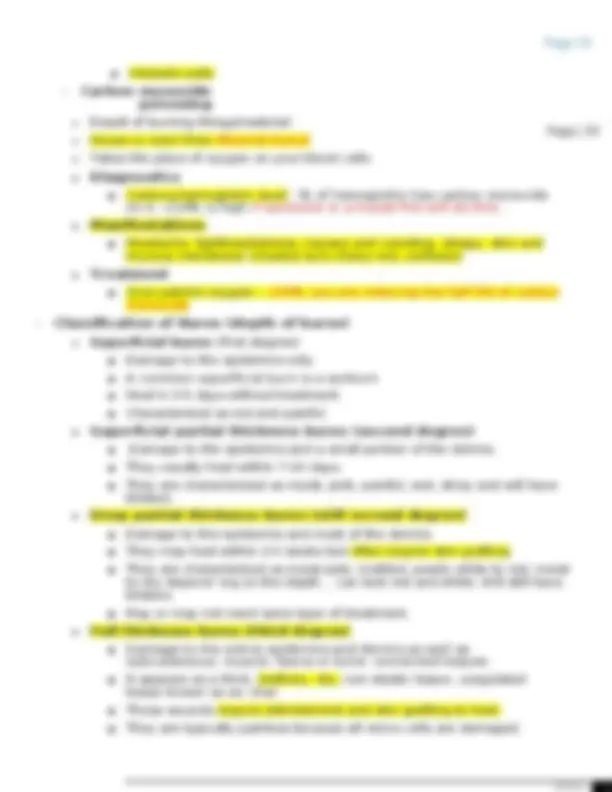
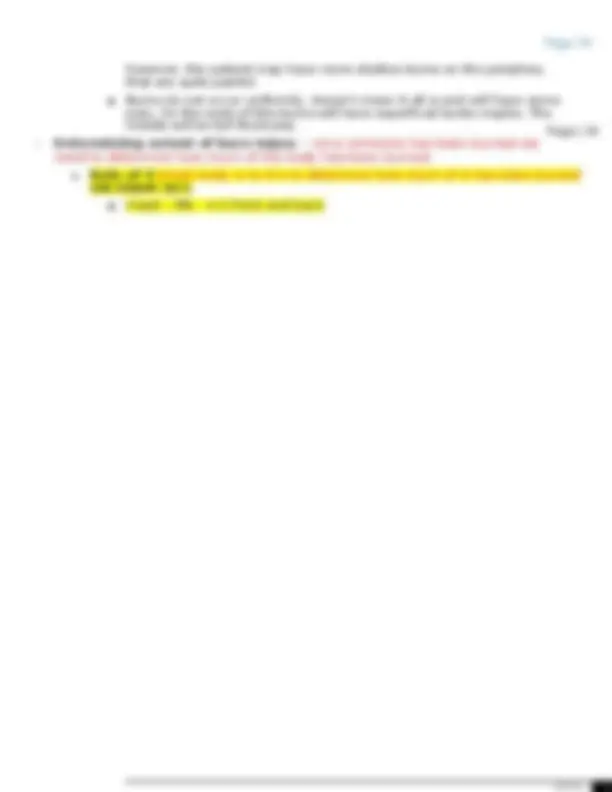
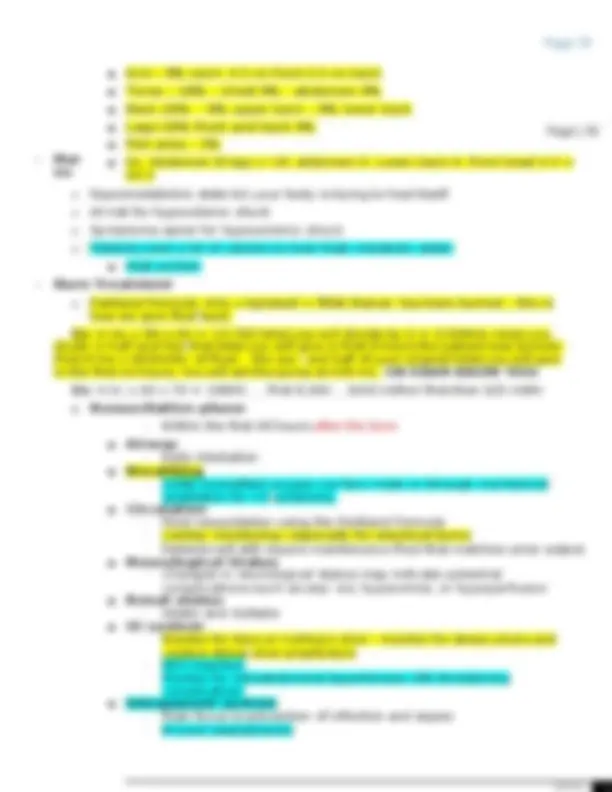

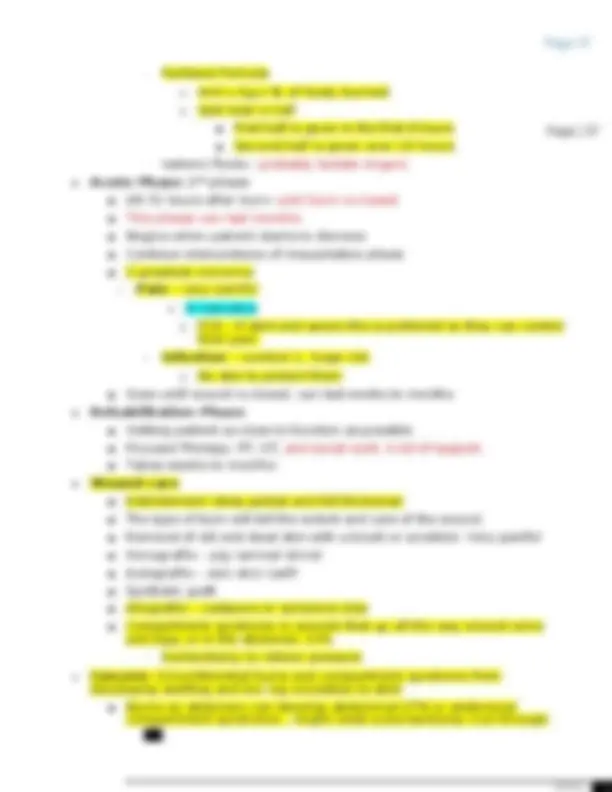

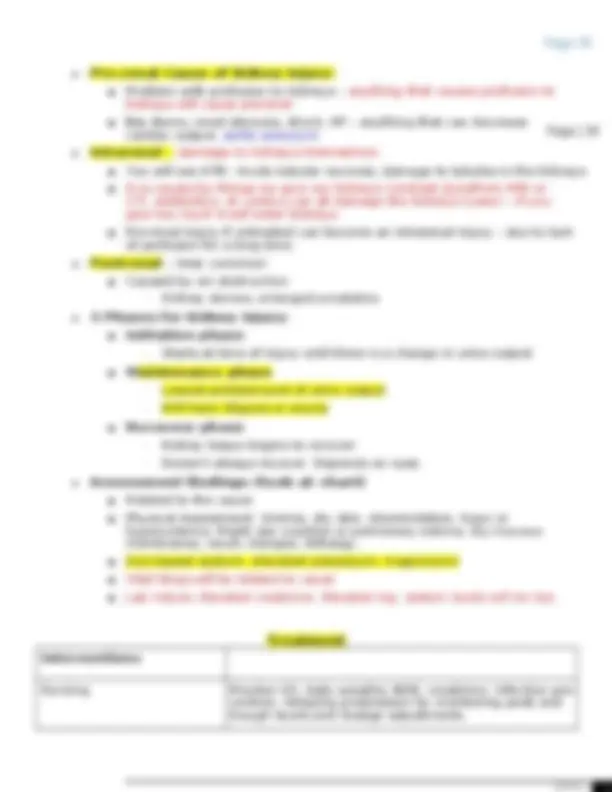
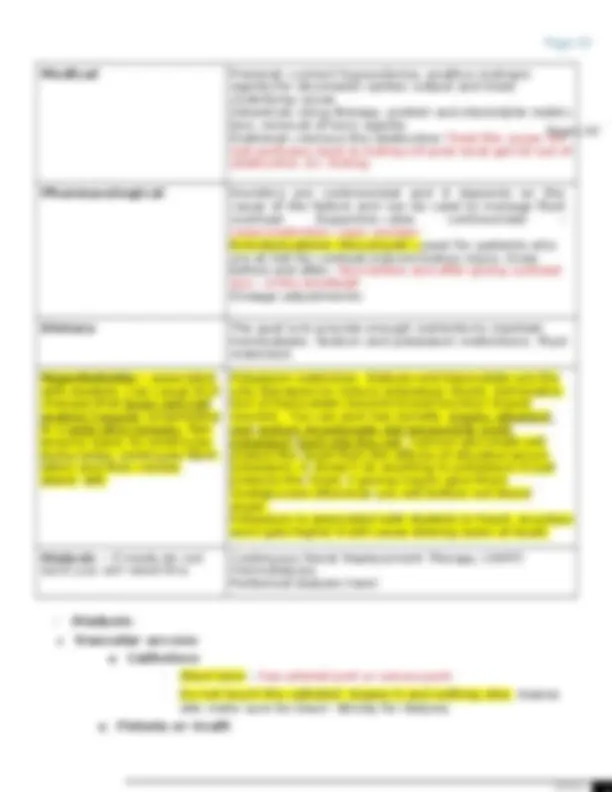

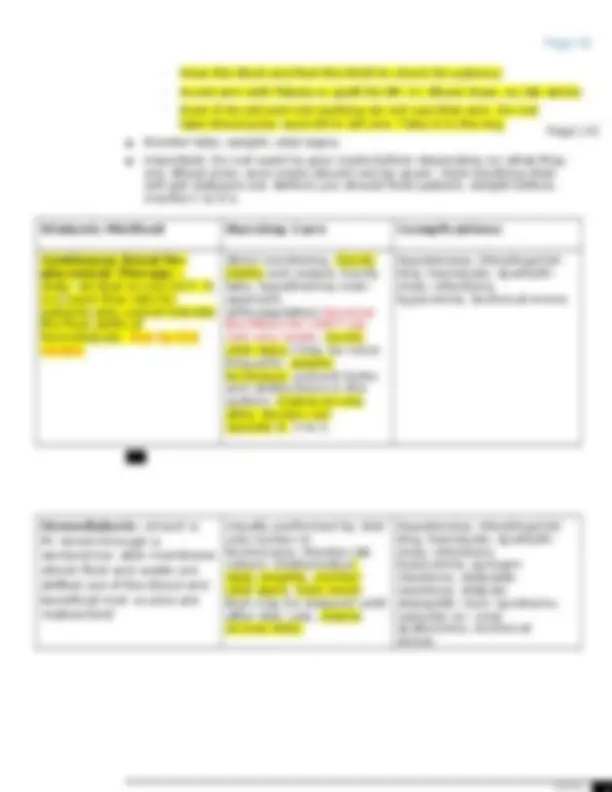
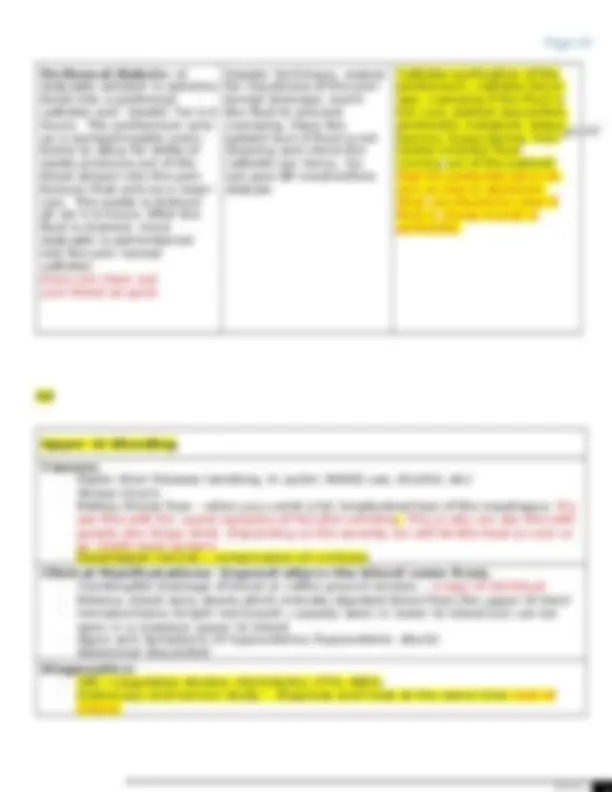
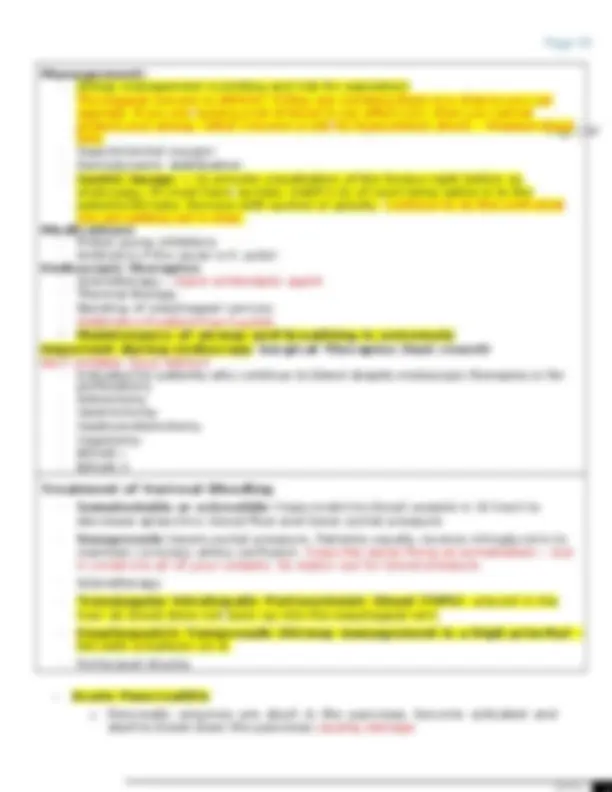
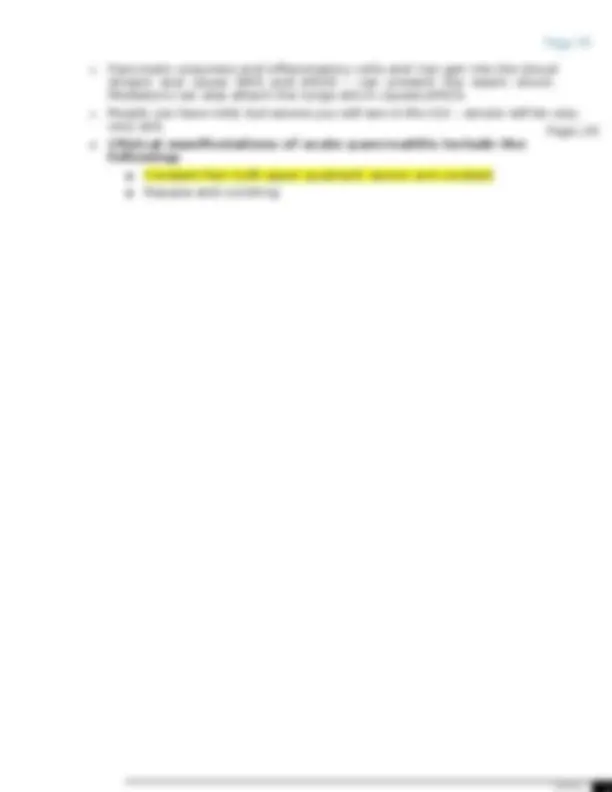
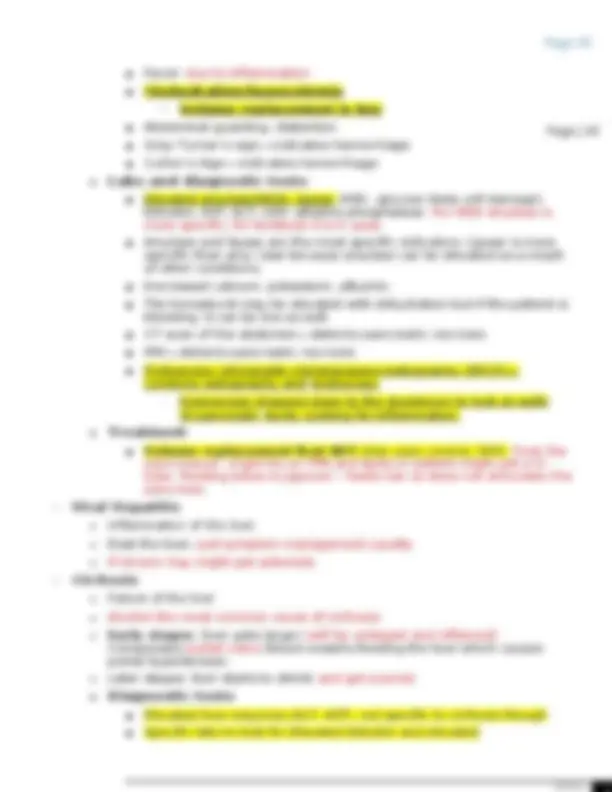
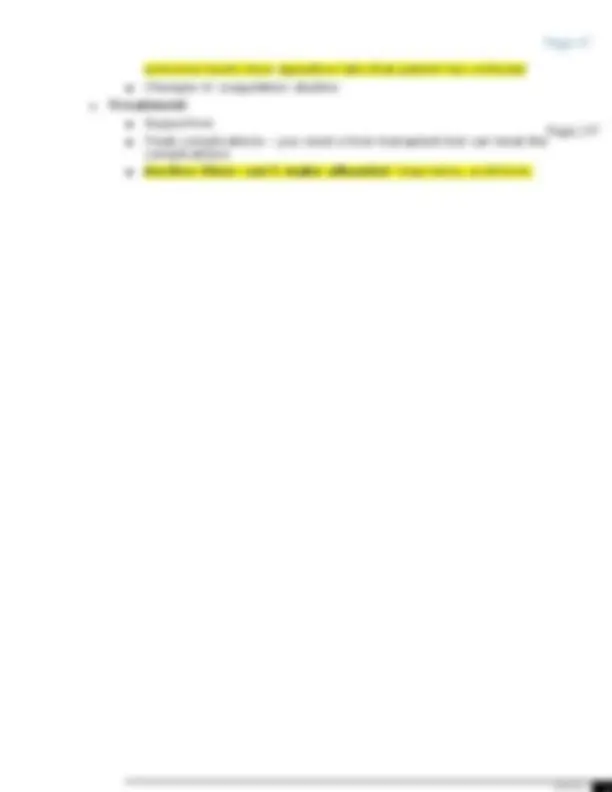
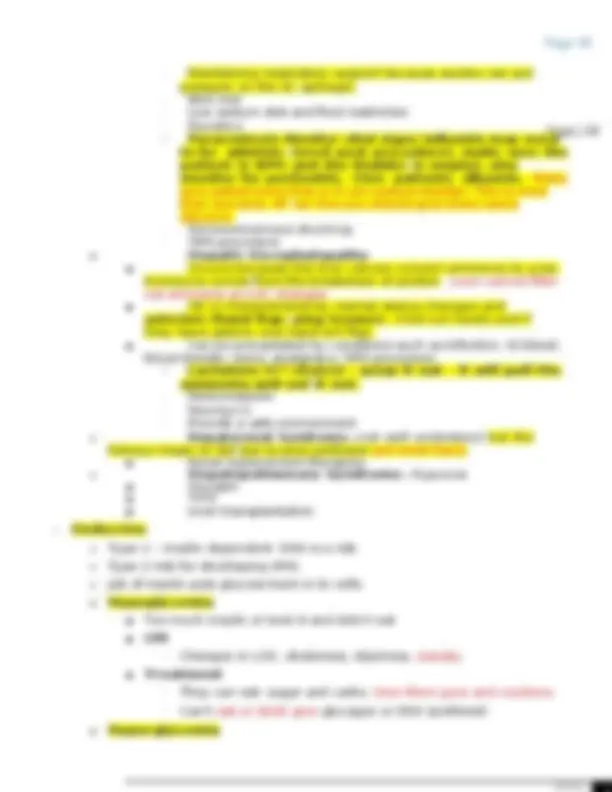

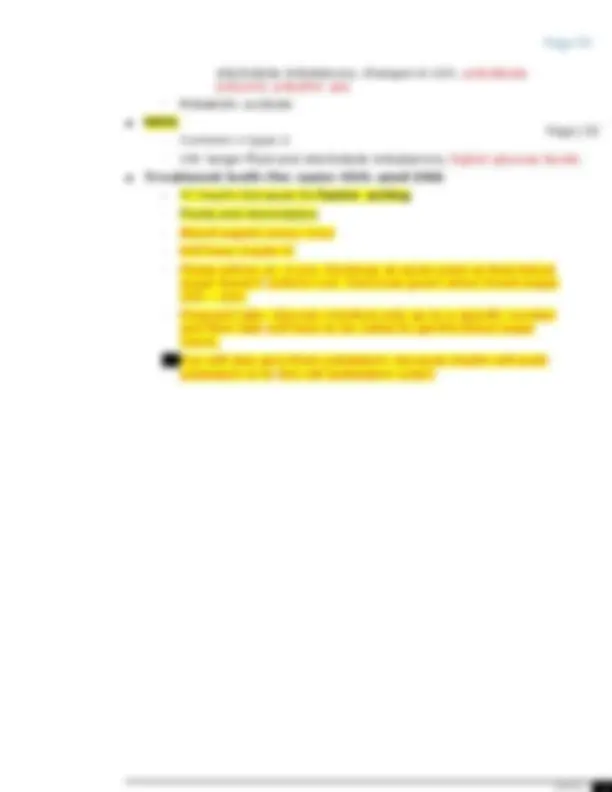


Study with the several resources on Docsity

Earn points by helping other students or get them with a premium plan


Prepare for your exams
Study with the several resources on Docsity

Earn points to download
Earn points by helping other students or get them with a premium plan
Community
Ask the community for help and clear up your study doubts
Discover the best universities in your country according to Docsity users
Free resources
Download our free guides on studying techniques, anxiety management strategies, and thesis advice from Docsity tutors
A guide for Critical Care Exam 3, with a focus on neuro basics. It covers topics such as brain metabolism, cerebral blood flow, autoregulation, neuro assessment, intracranial pressure, ICP monitoring, cerebral oxygenation monitoring, and medical management of ICP. The document also includes information on traumatic brain injury, skull fractures, and TBI classifications.
Typology: Exams
1 / 50

This page cannot be seen from the preview
Don't miss anything!











































Page | 1
Neuro Basics · Brain metabolism o Soul source of energy for the brain is glucose. Brain needs glucose to function. Brain cannot store it, but needs a constant supply. If glucose levels start to fall you will some changed. o Cerebral glucose < 70 mg/dL = confusion o Cerebral glucose < 20 mg/dL = damage · Cerebral blood flow · Autoregulation o Changes in pressure o Changes in CO 2 ▪ Alters cerebral blood volume with change in blood vessel size o Ability of the blood vessel in the brain to either constrict or dilate in response to pressure or CO2 levels ▪ Hypotension or hypoventilating causing hypercapnia BV in brain will dilate and vice versa try to send more blood and oxygen to brain. ▪ If hypertension or hypocapnia blood vessels in the brain will constrict. ▪ Systolic less than 50 or greater than 160 BV in brain lose the ability to autoregulate. Neuro Assessment o GCS, LOC, Memory, speech, Reflexes (babinski with brain injury) which only babies should have if adult has it this is not good, motor response, sensation , look for aphasia, motor strength ▪ Concerned with GAS or 8 or lower o Posturing ▪ Decorticate
Page | 2 · Extremities go toward the body ▪ Decerebrate · Extremities pull away from the body, more severe, damage to brainstem – this is the worse posturing · Cranial nerves o 1 – Olfactory - Smell o 2 – Optic - vison, pupil response, visual fields – PERRLA - need flashlight or pen light dim the lights in room o 3, 4, 6 - Oculomotor, Trochlear, Abducens - eye movement – 6 fields of gaze “EOM’S”
Page | 4 ▪ Monro-Kellie doctrine · Increase in any one component requires a reduction in one or both of other components to sustain normal ICP. o Normal ICP : 0-15 mm Hg o Cerebral Perfusion Pressure (CPP) ▪ How well brain is being profuse ▪ Dependent upon ICP and MAP (CPP = MAP – ICP) Systolic + 2(Diastolic) / 3 =
Page | 5 · Optimal is 70-100 mmHg · If less then 70 you can develop ischemia to brain tissue. · If under decrease BP or increase ICP ▪ If CPP is inadequate, ischemia or infarction can occur · Increased Intracranial Pressure o Associated with many neurological problems o ICP 20mm Hg or greater for 5 minutes or longer Increased metabolic de- mands, fevers, seizures can also increase in- tracranial pressure. o Results from an increase in any one of the three com- po- nents : ▪ Increased Blood Volume · Loss of Autoregulation · Decreased Oxygenation · Hypercapnia – cause blood vessels in brain to dilate sending more blood to brain which can increase pressure · Obstruction – Ex: Tumor ▪ Increased Brain Volume · Cerebral Edema ▪ Increased Cerebrospinal Fluid · Hydrocephalus o Cardinal (early) sign is changes in LOC o Pupil changes, respiratory changes are late sign o Herniation = he dead ▪ Brain usually comes out of foramen magnum ▪ Nurse needs to identify signs early. Prevention es muy importante. ▪ If ICP > 20 for 5 minutes or more herniation can occur.
Page | 7 o Severity of brain impairment, diagnose problems, assess responsiveness to therapy, aug- ment our assessment · Placement o Most placed in the ventricle because you can drain CSF also o Mostly placed in OR but can be placed at bedside o Only placed by neuro surgeon. · Transducer System o Fluid Filled o Microchip o Fiberoptic Catheter o Monitors can be placed in different areas of the brain, but most monitors will be places in the ventricles, most of these monitors have the ability to drain CSF as well. · Nursing Management o During Placement ▪ Set up equipment ▪ Maintain asepsis ▪ Dress the site after its been placed ▪ Document o During ICP monitoring ▪ Hourly neuro checks, hourly vitals (MAP, ICP, CPP), maintain sterility, monitor form complications (hemorrhage, infection), biggest complication is infection. Huge risk is also meningitis. · Cerebral Oxygenation Monitoring o Jugular Oxygen Saturation ▪ Monitored via a fiberoptic catheter ▪ Normal value 60%-70% · Does not ensure adequate perfusion ▪ Values < 50% indicate ischemia o Partial Pressure of Brain Tissue Oxygen
Page | 8 ▪ Monitor probe placed in brain white matter, actual oxygenation of brain tissue. · Goal: PbtO 2 greater than 20 mm Hg · Hemodynamic Monitoring · Continuous SpO2 or end-tidal CO
Page | 10 o Preoxygenate beforehand. o Limit suction to 10 seconds. No more then 2 to 3. · Assessment o Neurological exam hourly. o Vital signs
Page | 11 ▪ Cushing’s triad (bad) – never want to see this. ICP is so high that it is putting pressure on brainstem. · Hypertension, Bradycardia, Abnormal respiratory rate and pattern · Last thing before the patient herniates · If patient has this. Sit the patient up as high as possible (high fowlers). Patient will need surgery there is not much the nurse can do. · Nursing activities o Avoid clustering of activities o Avoid valsalva situations ▪ Pooping, coughing, vomiting. Can give stool softeners for poop. Vomiting can put in NG or give them an antiemetic. o Minimize external stimuli ▪ Noise, light, activities. No more then 2 family members in room. Keep it quiet. ICP Medical Management · Adequate Oxygenation o Goal: PaO 2 > 80mm Hg o Maintain O2 and CO2 levels. o Airway vigilance o Mechanical ventilation o Use PEEP with caution – decreases venous returns. If not in heart could be in brain because it’s everywhere. Typically won’t see more then 5 of peep. o Adequate hematocrit · Carbon Dioxide Management o PaCO 2 35-45 mm Hg o Avoid hyperventilation unless you see Cushing Triad. · Diuretics o Osmotic and Loop diuretics ▪ Reduce brain tissue volume (cerebral edema) · Mannitol – drug of choice, crosses BBB – pulls the sodium and
Page | 13 o Methylprednisolone · Fluid Administration o Optimized fluid administration with isotonic solutions – maybe do this. o Strict intake/output o Goal: serum osmolality less than 320 mOsm/L. euvolemic state o Colloids or blood products to restore volume · Blood Pressure o Goal: MAP 70-90 mm Hg o CPP: at least 70 mm Hg o Avoid hypertension ▪ Increases cerebral blood volume ▪ Nicardipine – also know as cardene o Avoid hypotension ▪ Ischemia brain tissue ▪ Vasopressors (dopamine, levophed) · Metabolic Demands o Temperature control ▪ Induced hypothermia to reduce metabolic demand of body · Goal: 34 o^ – 35 o^ C o Sedatio n – use cautiously not too much because you need still need to complete neuro as- sessment ▪ Benzodiazepines ▪ Propofol – short half-life. ▪ Analgesia o Seizure prophylaxis – seizures will increase ICP ▪ Phenytoin ▪ Levetiracetam - Keppra preferred method o Neuromuscular blockade
Page | 14 ▪ Paralyze the patient, last thing to do. · Surgical Interventions o Sometimes meducation is not enough o May be required to remove the cause of the IICP o Decompressive hemicraniectomy may be performed for severe injury
Page | 16 or stretched (kinda like shaken baby syndrome) · Hematomas o Epidural ▪ Bleeding artery (medical emergency) ▪ Lose consciousness but quickly regain consciousness then dete- riorate quickly
Page | 17 o Subdural ▪ Bleeding veins ▪ Acute – loss of consciousness, worsening manifestations very quickly. ▪ Chroni c subdural seen in the elderly o Intracerebral ▪ Bleeding of brain tissue itself ▪ Trauma or ruptured aneurism ▪ C omplications of primary injury · Intracranial bleeding o Secondary ▪ Body’s response to the injury ▪ Consequence of initial trauma · Inflammatory response o Cerebral edema which increases ICP which leads to tissue hypoxia · Release of cytokines o Vasogenic edema · Loss of Autoregulation · Traumatic Brain Injury Management o Nursing (same as increased ICP) ▪ Neurological assessment · Glasgow Coma Scale ▪ Airway assessment ▪ ICP monitoring ▪ Hemodynamic monitoring ▪ Interventions to control elevated ICP ▪ Evaluation of diagnostic tests
Page | 19 ▪ Evacuation hematoma ▪ Foreign body removal o Postoperative Neurosurgical Care ▪ Frequent and ongoing hemodynamic, neurological, respiratory, and metabolic assess- ment ▪ Position of head of bed · Physician specific. There will be a specific order whether its flat or up. ▪ Prevent complications: · Infection · Cerebral hemorrhage · Increased ICP · Hydrocephalus · Seizures Acute Stroke · Blood supply to brain disrupted by: o Occlusion (ischemic) o Hemorrhage · Hallmark is the sudden onset of focal neurological symptoms · Definition is a deficit that lasts 24 hours or more · Hemorrhagic Stroke Causes: o Intraparenchymal hemorrhage bleeding inside brain tissue o Ruptured Cerebral Aneurysm o Subarachnoid Hemorrhage o Arteriovenous Malformation ▪ Abnormal communication between your arteries and veins. Increased risk of ruptur- ing. Get a wad of mixed arteries and veins, very likely to rupture. · Ischemic Stroke
Page | 20 o Large Artery Atherosclerosis – most common o Cardioembolic Events (A-fib) - most common o Small artery occlusion (Lacunar Stroke) o Cryptogenic – unknown cause. Looked at everything no cue reason. · TIA